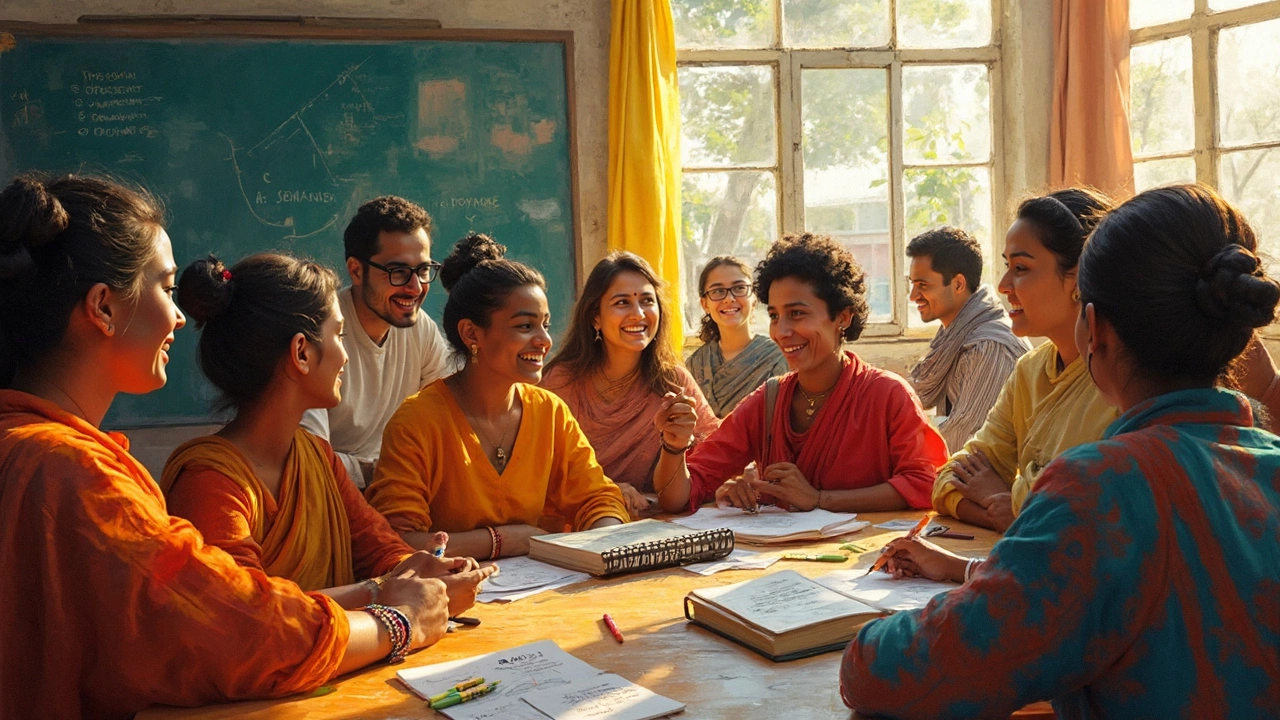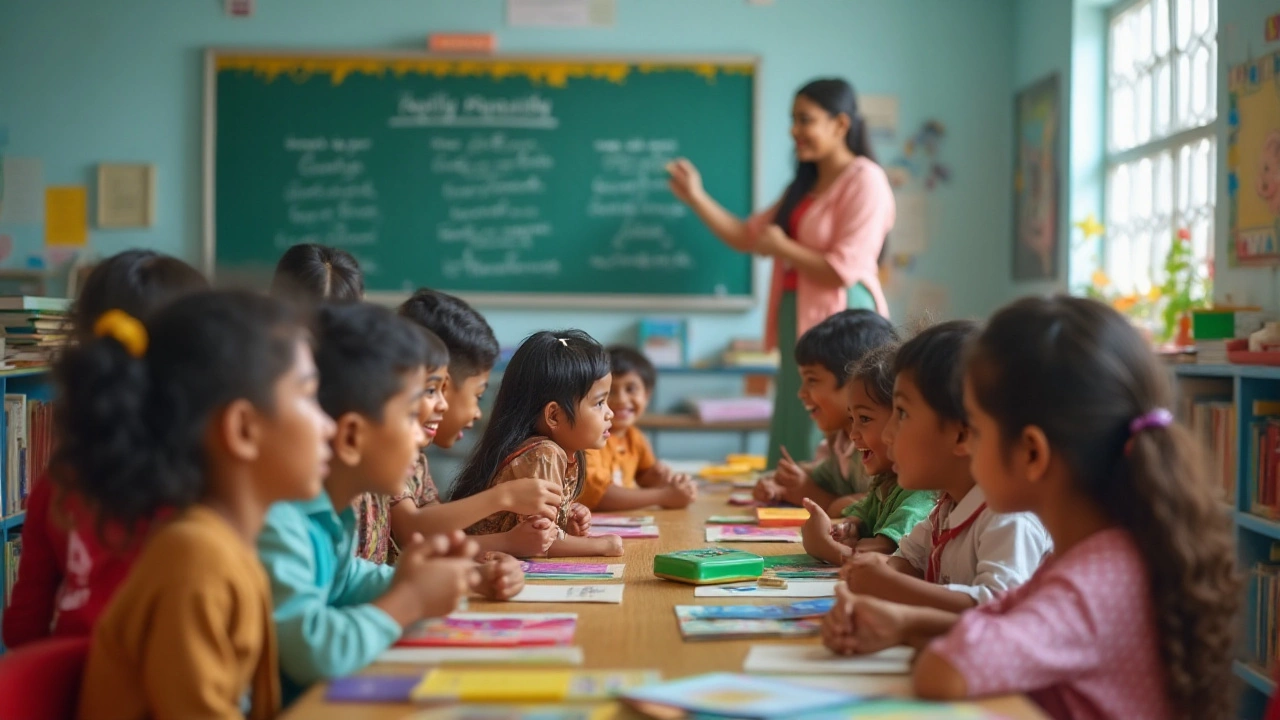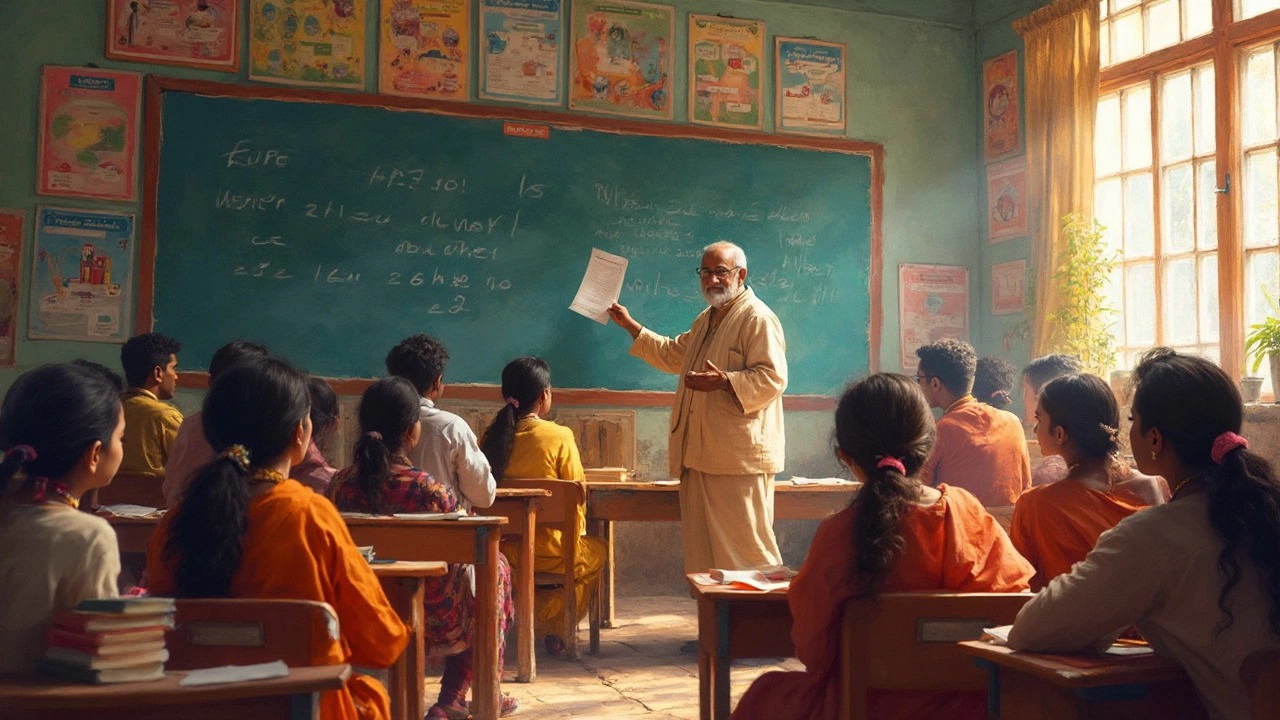Ever wondered why some teachers light up a room and get even the quietest kids talking, while others just slog through the lesson? It’s not magic—it’s the kind of training they’ve had. Old-school teacher training, the kind where you sit and listen for hours, doesn’t cut it anymore. Teachers need training that actually fits what’s happening in real classrooms right now.
Great training isn’t about ticking boxes or just racking up hours. It’s all about stuff teachers can actually use, things that make that Monday morning lesson start smoother and get kids to pay attention. Think role-playing tough situations, swapping real stories with other teachers, and getting feedback right away.
- The Flaws in Old-School Teacher Training
- Strategies That Give Real Results
- Blending Tech and Human Connection
- Tips for Picking the Right Program
The Flaws in Old-School Teacher Training
Remember those days when teacher training just meant sitting in a stuffy room while someone talked at you for hours? That’s still the case in a lot of places. But here’s the real problem: this lecture-style training rarely leads to lasting results. Research from the Bill & Melinda Gates Foundation found that only 29% of teachers felt the training they got actually helped their teaching. That’s not a great look for what we call “professional development.”
A big problem is the “one size fits all” approach. Every classroom is different, and so are the challenges teachers face. But these blanket workshops usually ignore things like different grade levels, subjects, or school environments. Teachers end up with tips that just don’t fit their reality. It’s pretty common to leave those sessions with a binder full of materials, then never look at them again.
- Dull, outdated content that barely changes year to year
- No practice—just theories and slides
- Zero ongoing support or follow-up
- No space to ask real questions or swap advice with other teachers
Worst of all, the so-called teacher training is disconnected from what actually happens during class. Kids’ needs change fast, especially with new tech and social issues popping up all the time, but these old programs move at a snail’s pace. That means teachers are rarely ready for the challenges they’ll face tomorrow.
Strategies That Give Real Results
So, what actually works when it comes to teacher training? Forget one-size-fits-all lectures. Teachers see the biggest impact when their training is hands-on, ongoing, and focused on real challenges.
One proven approach is coaching. Instead of just hearing about ideas, teachers work with a coach who gives personal feedback, often by observing a class or reviewing lesson plans. In a 2023 study by the Learning Policy Institute, schools that paired new teachers with a coach saw student scores jump by up to 7% within a year. That's not small potatoes.
Workshops that involve lesson modeling and actual classroom practice also make a difference. Teachers remember more and apply what they've learned if they get to try things out, mess up, and get advice right away. Peer collaboration is another heavy hitter: when teachers swap tips, talk honestly about what isn’t working, and share classroom hacks, everyone gets better.
"Professional development works best when it’s job-embedded, collaborative, and continuous." — National Education Association
Check out how different training methods stack up, based on real-world studies:
| Training Method | Improvement in Student Achievement | Teacher Satisfaction |
|---|---|---|
| Peer Coaching | +7% | 85% |
| Interactive Workshops | +4% | 78% |
| Online-only Modules | +1% | 55% |
So if you’re picking a program, look for these features:
- Real coaching, not just theory
- Chances to collaborate with others
- Practice, feedback, and more practice
- Tools and content you can use the very next day
In short, the best programs are practical and keep you learning with your peers, not just sitting through another slideshow.

Blending Tech and Human Connection
Teachers hear a ton about new gadgets, slick apps, and “digital classrooms.” But real learning happens when technology works alongside good old human connection. You can stack up software subscriptions, but if teachers don’t know how to actually use them with students, it’s kind of pointless.
One hard fact: The Education Week Research Center found that 66% of teachers say tech training alone isn’t enough—they need to see how it runs with real kids and real-time challenges. That’s why the most effective teacher training mixes tech tricks with simple, human ways of sharing ideas and solving problems together. Imagine teachers trying a new quiz app, then swapping tips with a colleague on what got kids excited—or what totally flopped.
Here’s where the sweet spot is:
- Start with hands-on sessions (not just demos) so teachers really get tech under their fingers.
- Mix in group chats or peer coaching, because teachers learn fast from each other’s hits and misses.
- Let teachers try tools with students and loop back for feedback, not just a single sit-down session.
Here’s what the numbers say about blended training:
| Training Type | Teacher Satisfaction (%) | Classroom Implementation (%) |
|---|---|---|
| Only Online Modules | 45 | 29 |
| Live Workshops | 59 | 37 |
| Blended Learning (Tech + Peer Support) | 82 | 68 |
Clearly, mixing tech training with human connection gets teachers using new stuff in class way more often. Schools that pair up digital tools with real conversation and teamwork see better results for everyone—even the most tech-shy teachers come away with tricks they actually use.
Tips for Picking the Right Program
There’s no shortage of promises or glossy brochures in the teacher training world, but you want results, not just theory. Start by looking for teacher training that is proven to boost classroom performance. Forget one-size-fits-all programs. Instead, find options that let you focus on real problems you face daily.
Here’s a handy checklist for sifting through your choices:
- Pick training that’s built on evidence, not on trends. Harvard’s Graduate School of Education found that professional development tied to actual teaching challenges gets twice the retention rate as traditional workshops.
- Check that there’s follow-up. One-off workshops rarely stick—programs with ongoing mentoring, like coaching over several months, lead to big improvements. Observations and feedback aren’t extras, they’re must-haves.
- See if the program lets you practice new skills live. Video practice or role playing beats just reading about good teaching techniques.
- Ask about peer collaboration. Programs that build in time to work or troubleshoot with other teachers keep people engaged and motivated.
- It has to fit your schedule. Hybrid or online options save time. According to the Bill & Melinda Gates Foundation, 85% of teachers say flexible formats make it easier to actually use what they learn.
Take a look at this table comparing training formats so you can see what typically works best:
| Training Format | Hands-On Practice | Ongoing Support | Flexible Scheduling |
|---|---|---|---|
| Traditional Workshop | Low | None | Limited |
| Coaching/Mentoring | High | High | Medium |
| Online Modules | Medium | Low | High |
| In-Class Peer Learning | High | High | Medium |
Consider your goals—do you want to get better at classroom management, try new tech, or help special needs students? Pinpoint your needs so you don’t waste time learning stuff you won’t use. Get feedback from other teachers who’ve been through the programs you’re curious about, and don’t be shy to ask tough questions before you sign up. The right teacher training can be a game-changer, but only if it really fits your world.



